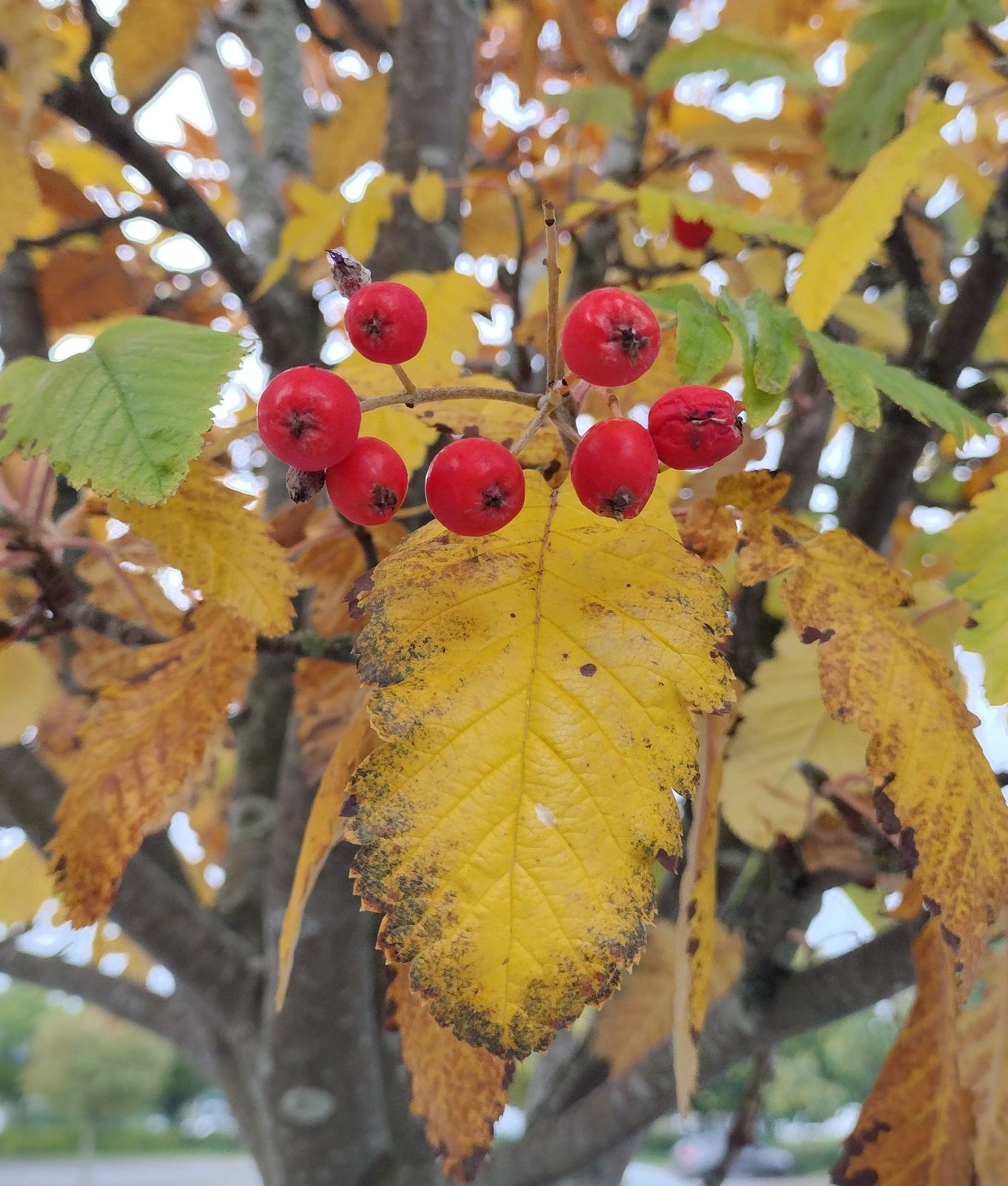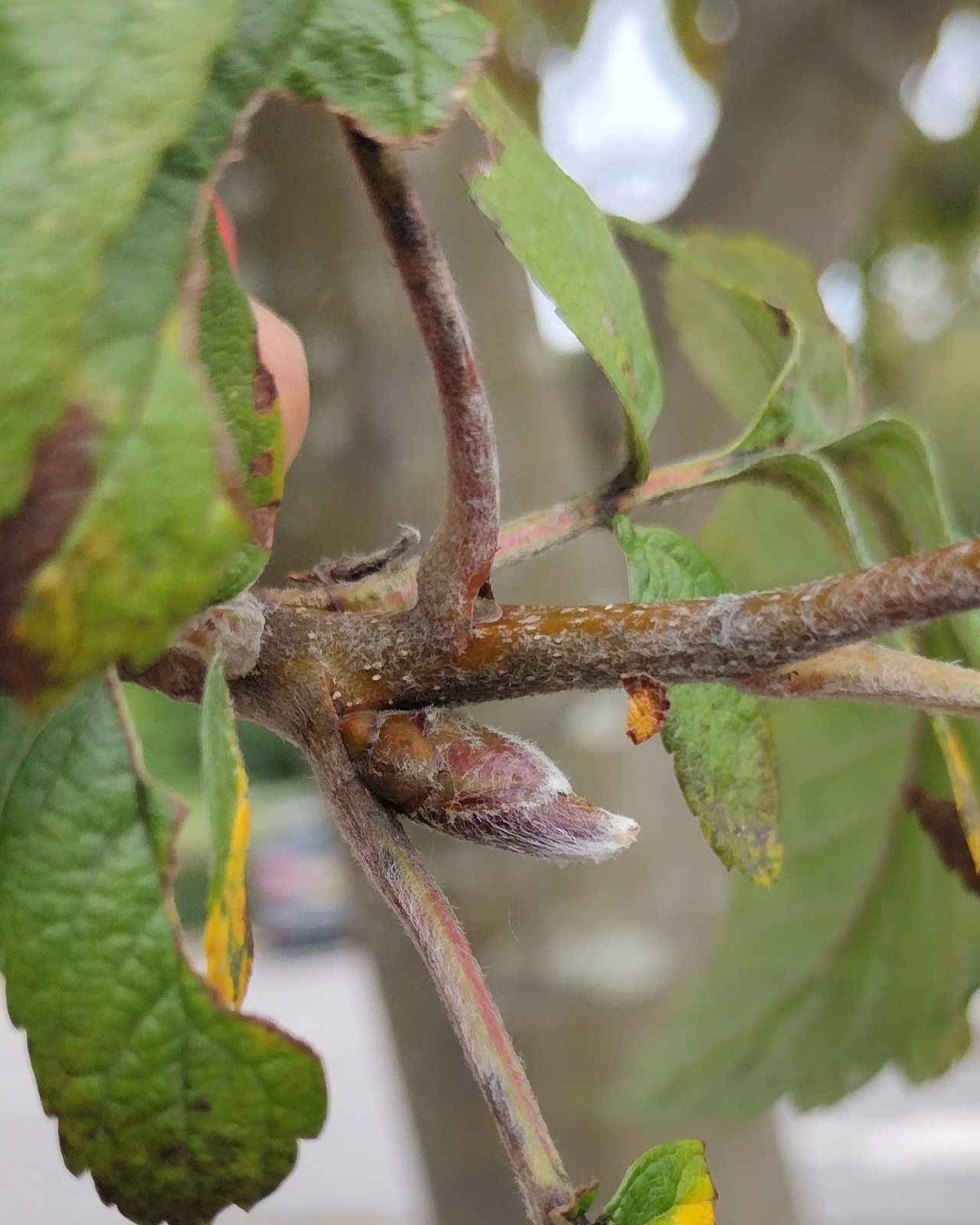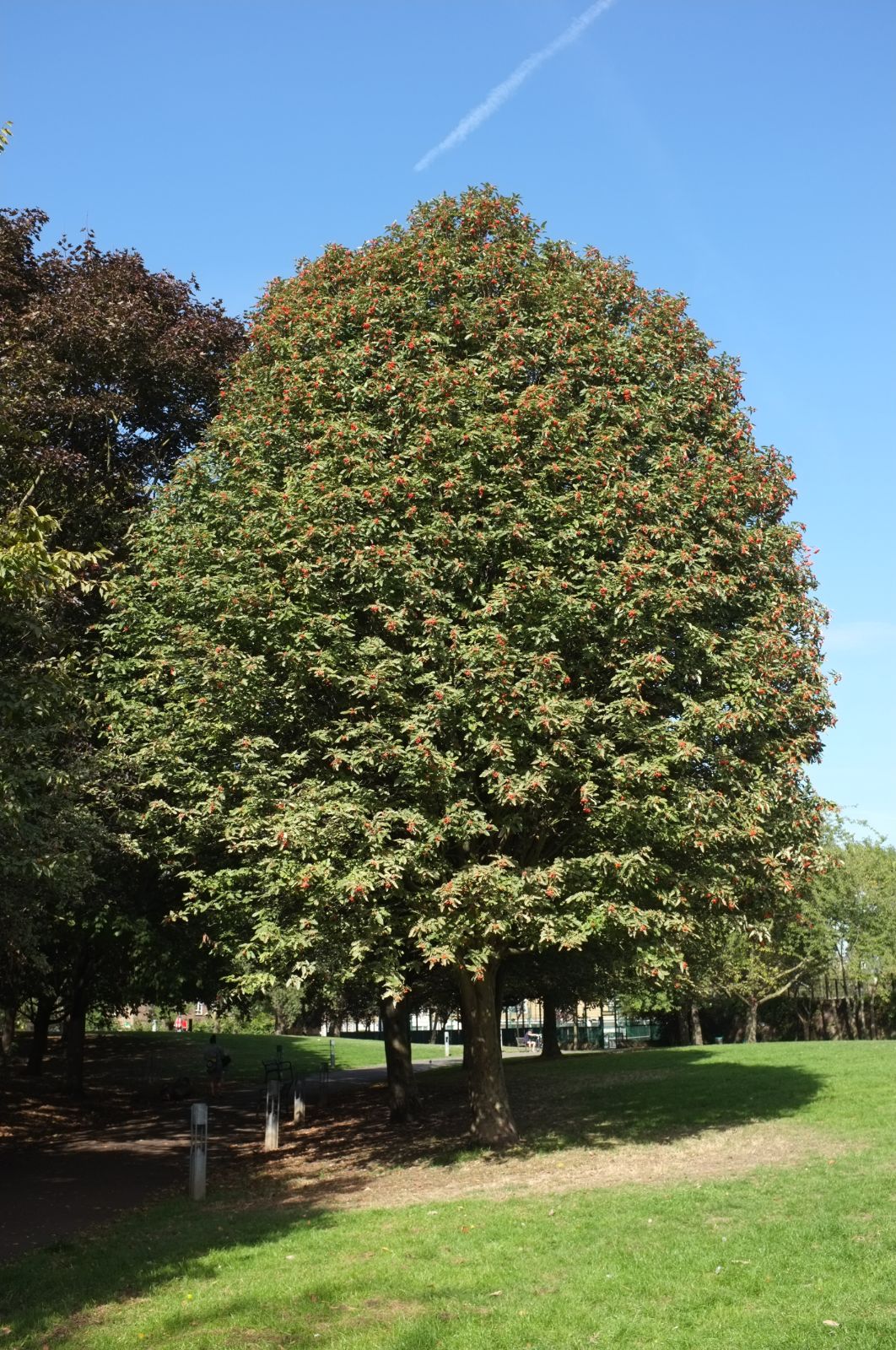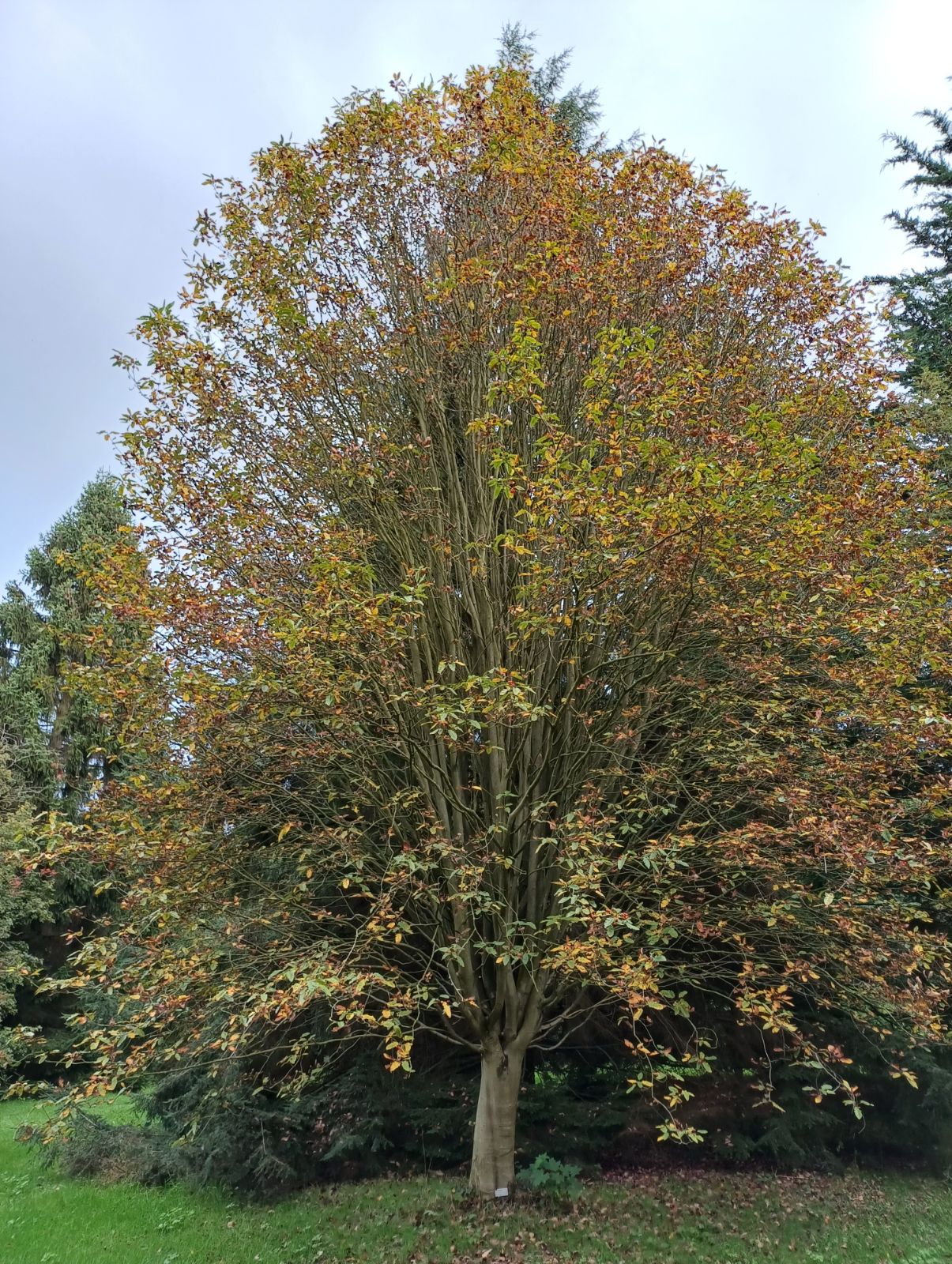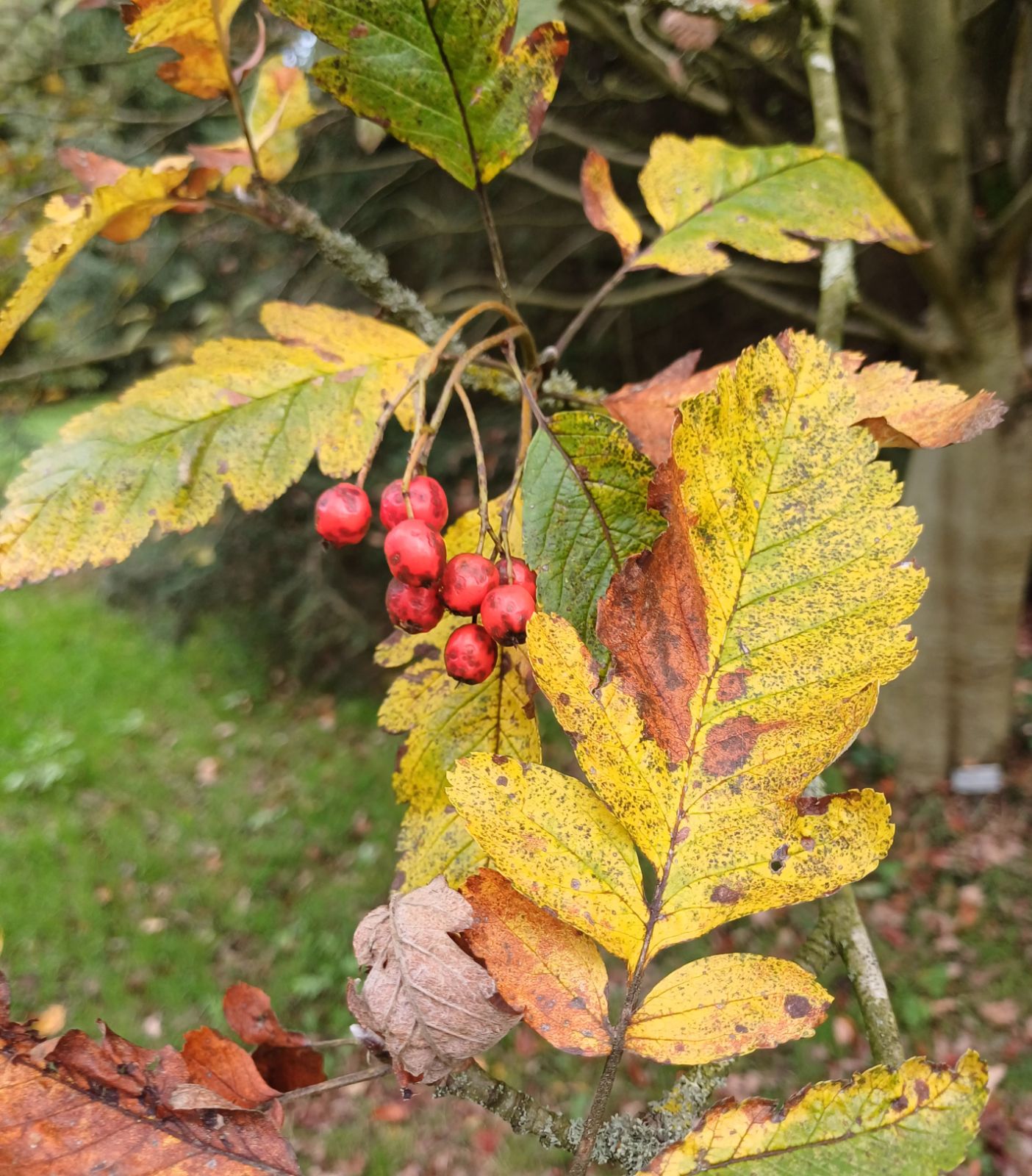Hedlundia thuringiaca
Credits
Article from Bean's Trees and Shrubs Hardy in the British Isles
Recommended citation
'Hedlundia thuringiaca' from the website Trees and Shrubs Online (treesandshrubsonline.
Genus
Synonyms
- Aria thuringiaca (Nyman) Beck
- Pyrus firma Osborn
- Pyrus pinnatifida Sm.
- Pyrus thuringiaca Ilse
- Pyrus thuringiaca (Nyman) Ruhmer
- Sorbus decurrens (Koehne) Hedl.
- Sorbus hybrida var. thuringiaca Nyman
- Sorbus neuillyensis Dippel
- Sorbus pinnatifida Düll
- Sorbus pinnatifida var. thuringiaca (Nyman) Düll
- Sorbus quercifolia Hedl.
- Sorbus semipinnata var. thruringiaca (Nyman) Kárpáti
- Sorbus thuringiaca (Nyman) Fritsch
Infraspecifics
The text below is that of Bean (Bean 1981) who discussed this taxon under the name Sorbus thuringiaca. We have created this hybrid article – Bean’s text under the correct modern name, with appropriate synonymy – whilst we await sponsorship to enable a full revision of this genus to be written. We are re-organising the Sorbus sensu lato articles in this way to enable a new revision of Sorbus sensu stricto to commence in 2023, and to bring the nomenclature of this complex group of plants up to date in line with modern treatments.
TC, September 2023.
In areas where they grow together, S. aria and S. aucuparia occasionally hybridise, producing plants that in the first generation are intermediate and mixed in their foliage, having some leaves that are deeply lobed in the basal part or even with a pair of free leaflets at the base, and are also intermediate in leaf indumentum, fruits and winter-buds. Such hybrids occur as rare individuals in the company of the parents; like these they are diploid; and do not breed true when raised from seed. Such hybrids have been confused with S. hybrida L., which is a tetraploid apomictic species with a restricted distribution in Scandinavia (for the differences between it and the cultivated form of S. × thuringiaca, see below). The difference between S. hybrida and the trees found wild in Britain and on the continent was pointed out by Boswell-Syme in 1875 (Journ. Bot., Vol. 13, pp. 286–7), but these natural hybrids between S. aria and S. aucuparia continued to be confused with S. hybrida until well into the present century.
The form of S. × thuringiaca commonly planted in Britain lacks a distinctive name, but is probably the same as the tree cultivated on the continent for which Hedlund took up the horticultural name ‘S. quercifolia’. It is a tree to 50 ft high, with very numerous ascending branches, forming in age a dense, rhombic crown; branchlets covered at first with a loose floss, soon glabrous, lustrous brown; winter buds ovoid, densely woolly. Leaves oblong-lanceolate or narrowly elliptic in general outline, 3 to 6 in. long, twice to two-and-a-half times as long as wide, narrowed to a mostly acute apex, dark green and rather rugose above (light green when young), covered beneath with a dull grey persistent tomentum. On flowering shoots and the short growths of old trees the leaves are deeply lobed in the lower part, the basal lobes extending to the midrib, the upper ones decreasing in depth and merging into double teeth and these into simple teeth near the apex; but on strong shoots there is a free pair of leaflets at the base, or even two pairs, the lowermost pair separated by about 3⁄8 in. from the pair of lobes or leaflets above it. The main lateral veins are in ten to twelve pairs, excluding the veins running out to the sinuses, which are sometimes as conspicuous as those running to the tips of the lobes or main teeth. The minor teeth are shortly acute, with callous tips. Flowers white, about 1⁄2 in. wide, produced in May in corymbs 3 to 5 in. wide, which are woolly as in both parents. Fruits bright red, globose or ellipsoid, about 3⁄8 in. wide, with a few lenticels; calyx-lobes erect or infolded, eventually more or less fleshy.
This tree has been in cultivation since late in the 18th century, but is of unknown origin, and may be the result of a cross between S. aucuparia and some long-leaved continental form of S. aria. It is surprisingly uniform in its foliage, the only essential difference between one leaf and another being in the presence or absence of free leaflets at the base. In wild presumed first generation hybrids between the two parents the foliage is more variable, some leaves being unlobed, and leaves with free leaflets at the base occurring only at the tips of strong shoots. From S. hybrida this tree differs obviously in its habit, but also in its longer, more pointed leaves with shortly pointed teeth, and quite different fruits.
This cultivated form of S. × thuringiaca makes a handsome specimen of rather sombre aspect. It has attained 52 × 41⁄4 ft in the Savill Garden, Windsor (1973), and 40 × 23⁄4 ft in the Winkworth Arboretum, Godalming, Surrey (1967).
From the Supplement (Vol. V)
specimens: Green Park, London, 31 × 53⁄4 ft (1982); Hyde Park, London, 44 × 5 ft (1981); Savill Garden, Windsor Great Park (‘Decurrens’), 56 × 5 ft (1983); Ashridge Park, Herts., 59 × 51⁄4 ft (1980); Hollycombe, Liphook, Hants, 65 × 71⁄4 ft (1984).
'Decurrens ('Lanuginosa')
Leaves with up to five or even seven pairs of leaflets but fewer on short shoots, the uppermost pair broadly decurrent onto the rachis; upper part of the leaf simulating a terminal leaflet, obovate, 1 to 2 in. long, lobed in the lower part and sometimes confluent with the upper pair of leaflets. Fruits not freely borne (S. decurrens (Koehne) Hedl.; S. aucuparia × (S. aria nivea × S. aucuparia) f. decurrens Koehne; Pyrus lanuginosa Hort., not Kit. ex DC.).This sorbus, now uncommon, was long grown in gardens as Pyrus lanuginosa, and is excellently described and figured in Loudon, Arb. et Frut. Brit. (1838), Vol. II, p. 924, and Vol. VI, p. 146). Its origin is unknown, but central forms of S. × thuringiaca are known to produce seedlings that approach S. aucuparia in their numerous leaflets and no doubt ‘Decurrens’ arose in this way. Similar second generation plants have been found growing wild in Hungary. Garden clones similar to ‘Decurrens’ are ‘Neuillyensis’, raised in France in the last century and distributed by Messrs Simon-Louis. It is not known to be any longer in commerce in Britain but was probably ornamental in fruit, as the inflorescence was remarkably large, judging from herbarium specimens. Of more recent introduction is ‘Leonard Springer’, put into commerce by the Dutch nurseryman Lombarts in 1938, with four or five pairs of leaflets and a terminal ‘leaflet’ 2{1/2} to 2{3/4} in. long. It produces abundant orange-red ovoid fruits about {5/8} in. long and is of more spreading habit than other cultivated forms of S. × thuringiaca. Its name is perhaps best placed directly under Sorbus, since it is by no means certain that it a form of S. × thuringiaca and not a cross between S. aucuparia and S. hybrida or S. intermedia.Under the name S. decurrens a hybrid was distributed in the 1930s which is not ‘Decurrens’. It is similar in foliage to the common garden form of S. × thuringiaca, but the segments of the leaves are more acute and the fruits are more freely borne in denser clusters on closely set spurs.Seedlings of S. × thuringiaca with numerous leaflets have been confused with S. meinichii (q.v., under S. hybrida).
'Fastigiata'
This appears to differ from the usual garden form of S. × thuringiaca only in its more narrowly fastigiate habit. It was put into commerce by Messrs Backhouse of York early this century.

